I should have known better. The slough where I dropped anchor for the night was among the many tidal backwaters of the Snohomish River near Everett, Washington. The sloughs were littered with waterlogged driftwood, some of it exposed at low tide, the rest permanently submerged. I dropped my expensive stainless-steel anchor for the night and in the morning it was truly stuck. I spent over two hours trying to free it, using brute force and every trick I knew, and ultimately had to cut it free. It was the only time I’d lost an anchor and I wanted to make sure I’d never lose another.
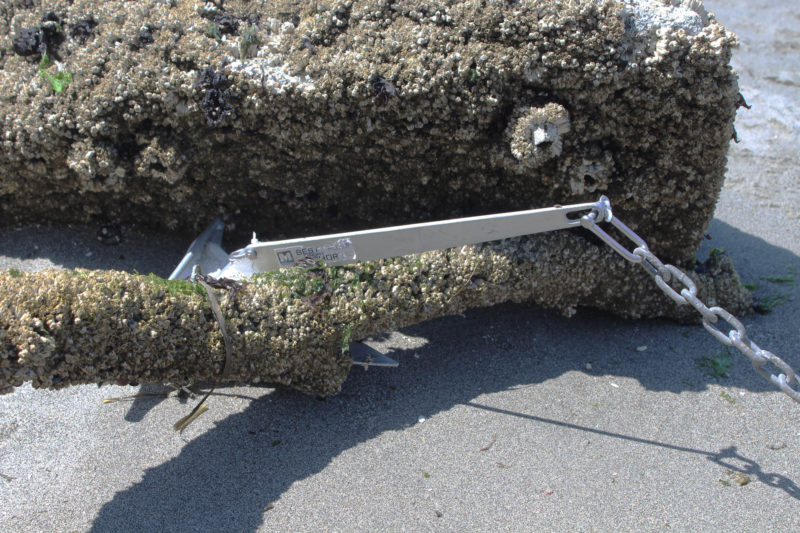 Photographs by the author
Photographs by the authorThis combination of driftwood and a boulder, seen here exposed by the low tide, are the sort of underwater hazard that will snag an anchor.
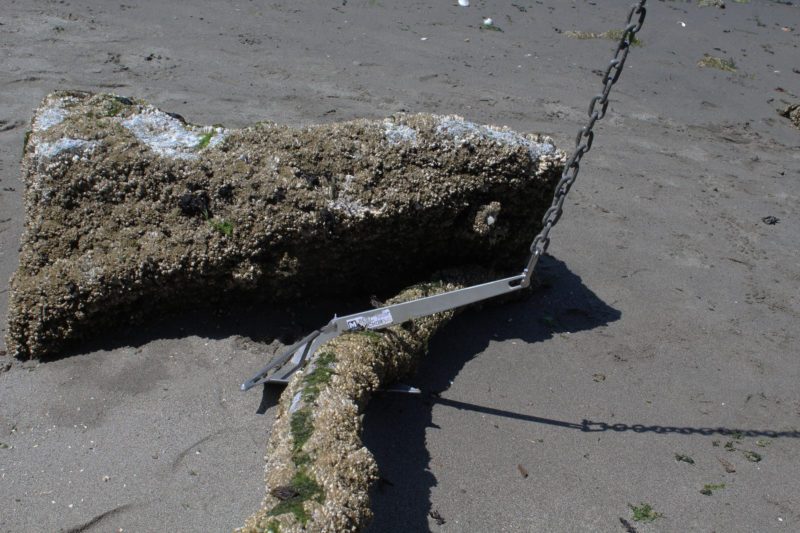
Pulling up on the anchor won’t break its hold on the driftwood and pulling the stock backward will only pivot the anchor, not release it.
The method that I’ve occasionally used to make suer I don’t lose an anchor is to tie a retrieval line to the anchor’s crown and the other end of the line to a small buoy, before I drop the anchor. If the anchor gets hung up and won’t follow the rode up, the buoyed line will pull it backward out of the jam.
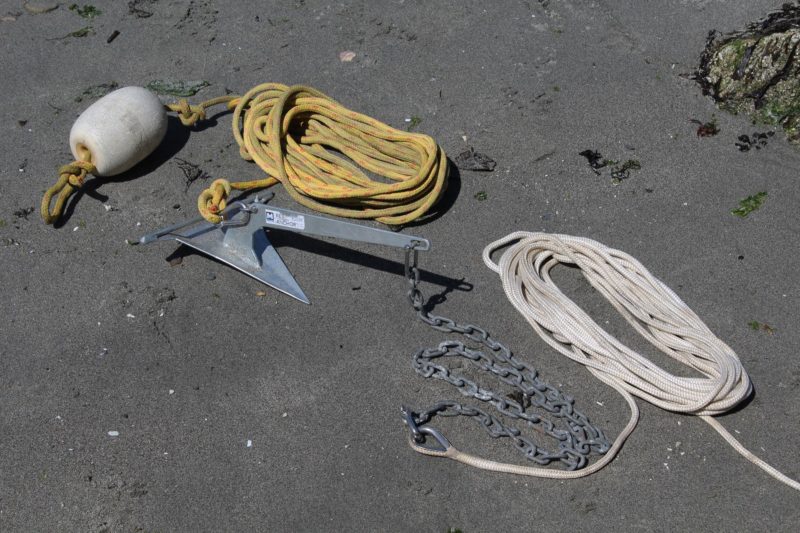
My tried-and-true system has the ordinary arrangement of a chain and rode on the eye of the anchor, accompanied by a floating retrieval line with a fishing-net float on one end and a strong stainless-steel carabiner on the other.
Using a retrieval line isn’t as convenient as using a single rode and its chain, so I looked on the Web for other ways to pull an anchor out of a jam. What I found were variations on a theme: connecting the end of the chain to the crown of the anchor and applying a breakable connection between the eye of the anchor and the chain that parallels the shank and passes by the eye.
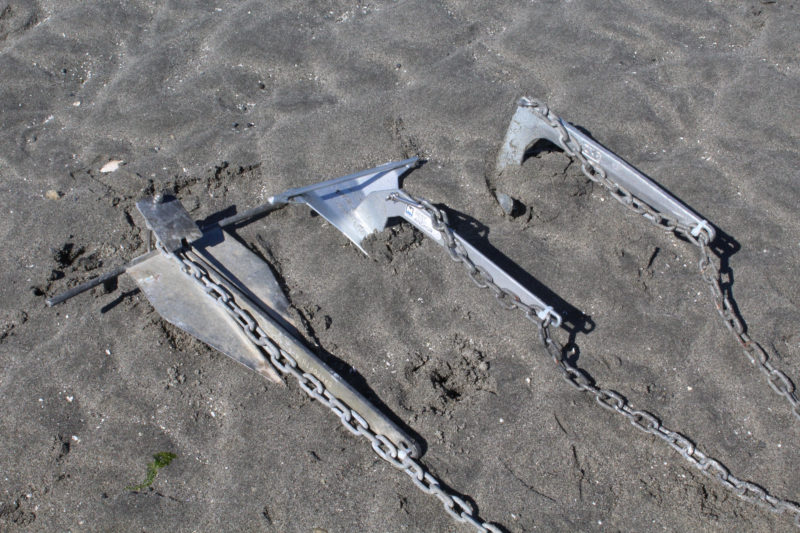
I tried the cable-tie breakaway system on three anchors (from left): Danforth, Mantus, and a claw.
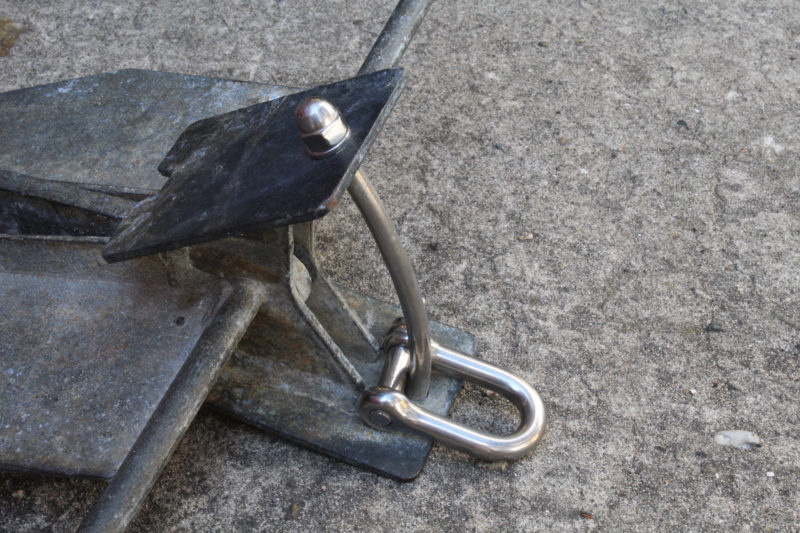
I added a tripping bar to a Danforth by drilling holes in the anchor’s plates and inserting a stainless-steel bolt, bent to be square to each plate.
Many anchors have a hole at the crown for a line to pull the anchor backward, but neither of my two Danforth anchors do. A search on the Web turned up only a few photographs of Danforths with holes in the rectangular plates at the crown and one drawing showing a “tripping ring” secured between those plates. I drilled 1/4″ holes in the plates of one of my Danforths and inserted a bent stainless-steel bolt as a tripping bar.

While the chain is tensioned along the shank, a cable tie is applied, placed to allow the attached link to move along the axis of the anchor’s shank. In a normal anchoring, the tie will not be subject to a breaking strain.
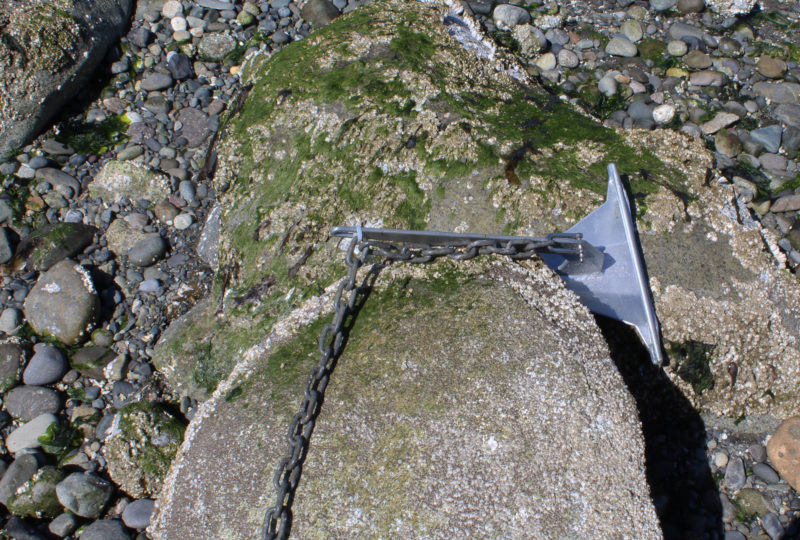
Changing the direction of pull on a stuck anchor will put the tension on the cable tie. When the system works as it should, the tie will break and the chain will pull the anchor from the opposite end of the shank and free it. I found that breaking a cable tie is not always a sure thing.
The most common breakable connections I found in my research were plastic cable ties. One YouTuber suggested twine, but wasn’t clear how thin or how thick it should be. Cable ties come labeled with their breaking strength, so it’s possible to find an appropriate size that can hold the anchor head securely yet be consistently within your abilities to break and free a stuck anchor.

The Anchor Trip Link here is in the open position, ready for installation. The instructions indicate that the slider can be hooked over the opposite are and adjusted while squeezing the link by hand or with pliers. I had to resort to pliers. (The shackle the link is attached to should have the same diameter as the Anchor rip Link. The shackle used for these photos is slightly oversize.)
I also found my way to the Anchor Trip Link from the U.K. It’s a 5″-long chain link, split at one end and equipped with a slider that adjusts to hold the split ends together or separate them. After the end of the anchor chain is secured to the crown of the anchor, the Trip Link is inserted into the anchor chain and the split ends are closed over a shackle in the anchor’s eye. The Trip Link holds a bit of slack in the chain paralleling the shank so the strain on the chain goes directly through the link to the anchor. The slider determines how much force is required to pull the shackle through the split.
My tests at home were quite promising. I could pull hard on the rode, and with the chain parallel with the anchor shank, there was little strain on the cable tie. And yet I could step on the anchor flukes, snap the chain, and break the tie. The Anchor Trip Link performed well too with the same tests.
When I went to the beach for some low-tide trials, the Mantus, my deepest-digging anchor, got off to a good start. It did well with the cable-tie method, and I could set the anchor and change the direction of pull without breaking the tie. The Danforth did the same thing in the sand, but on one trial over rocks, the tips of the flukes got hung up and didn’t penetrate the ground. That made the crown rise, and created enough of an angle in the chain to put a strain on the tie and break it. On another trial, the chain was beneath the Danforth’s shank and prevented the flukes from pivoting into the sand; the anchor just skidded. The claw anchor, which I never use because it seems unable to get a good purchase on sand, surprisingly released the tie when I changed the direction of pull. That surprised me because the claw offered so little resistance. I don’t know if the tie broke or if its ratchet failed; either way, it wasn’t a point in the favor of cable ties.
To simulate a scenario where the anchor was stuck, I slipped the Danforth in between some driftwood logs and pulled the rode at an angle that put the strain on the tie. The chain had to curve a bit over one log, and while that seemed to reduce the pull on the tie only slightly, I couldn’t break the tie. I also tested the tie at the end of 75′ of 7/16″ nylon anchor rode. There was so much stretch in the rode, about 6′, that the tie never got a sudden, sharp jerk. I couldn’t break the tie that way, but when I removed the anchor from the logs and stepped on the flukes, one sharp pull on the chain snapped the tie.
I tried the same log-snag test with the Anchor Trip Link. On two trials, the link got fouled on the anchor shank in such a way that the split couldn’t be put under strain and release the shackle.
I was at the beach conducting trials for less than two hours and yet in that short time I experienced several different and unexpected fails. I suppose with practice I could make the release systems work better, but I didn’t have faith it would be enough to overcome Murphy’s Law. And anchoring late in the day, tired and in the fading evening light, is not the time for using a finicky system.
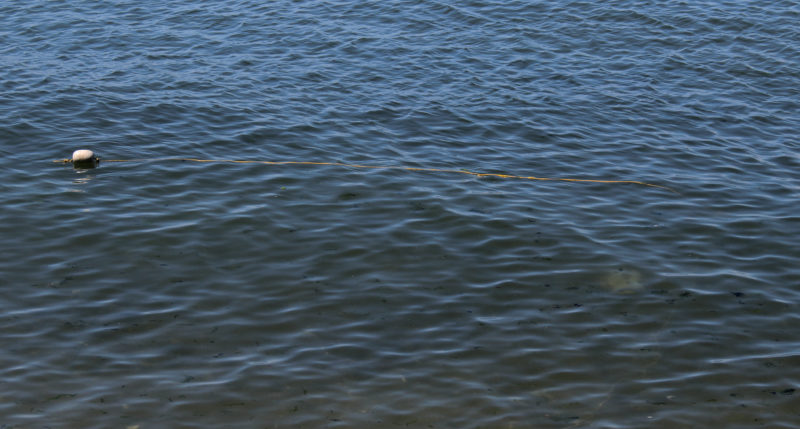
A floating retrieval line keeps the slack on the surface where it won’t get fouled by underwater snags.
I’ll continue using the separate anchor retrieval line. With enough scope, it’ll keep a buoy from pulling up on an anchor in a rising tide. A floating polypropylene braided line, the kind used for rescue throw ropes and dinghy painters keeps the line from getting tangled on any snags on the bottom.
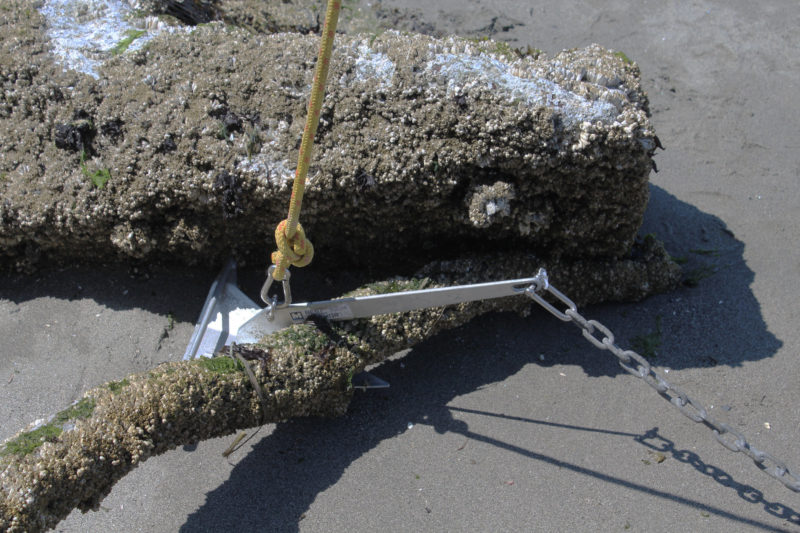
If the anchor has a floating trip line attached, that line is much less likely to get snagged and have its direction of pull changed in a way that won’t free the anchor.
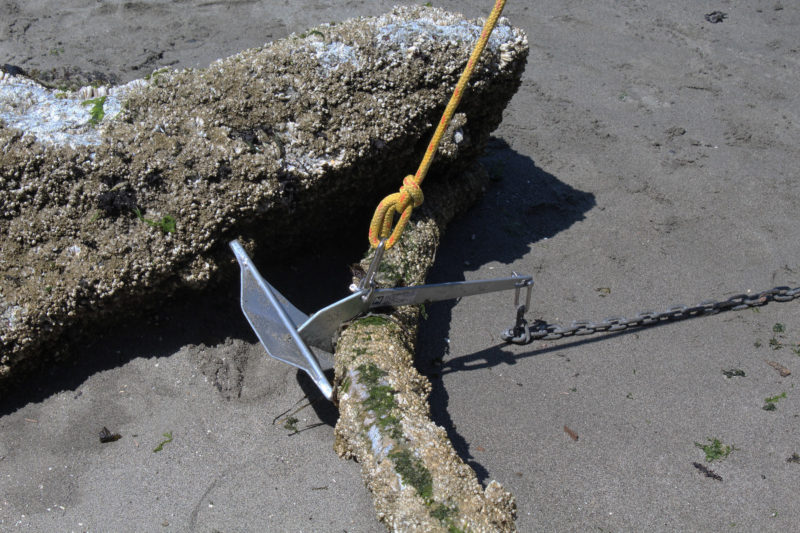
Letting the anchor rode go slack, then pulling up on the retrieval line, will back the anchor out.
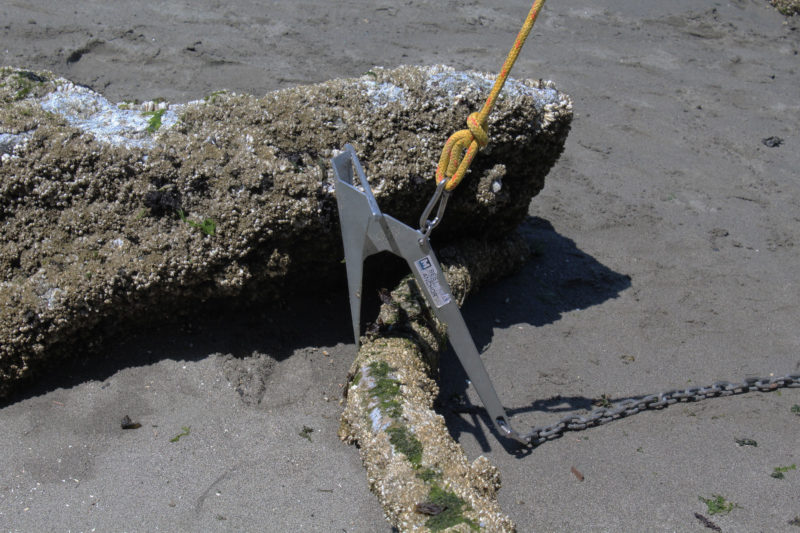
A few tugs were all it took to free the anchor.
A buoyed retrieval line may be an extra line to fuss with, but it is simple and there is not much that can go wrong with it.![]()
Christopher Cunningham is the editor of Small Boats Magazine.
You can share your tips and tricks of the trade with other Small Boats Magazine readers by sending us an email.

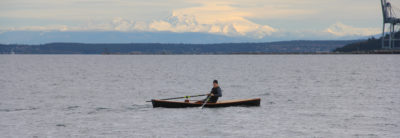

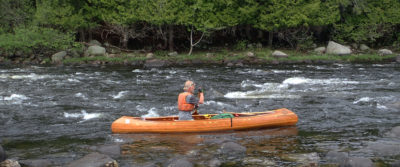
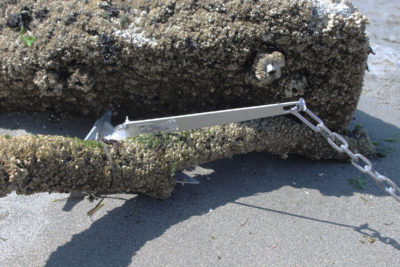
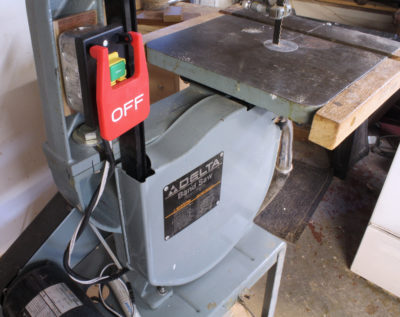
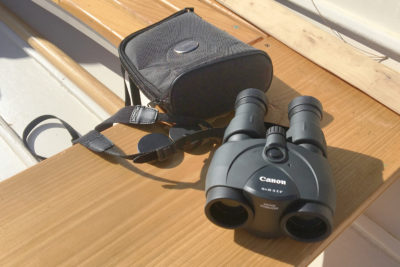
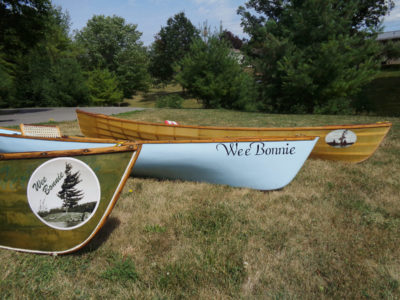
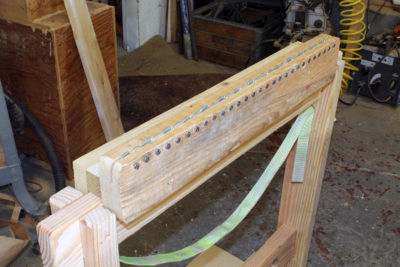

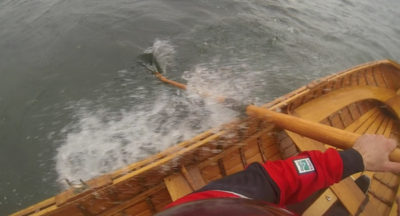
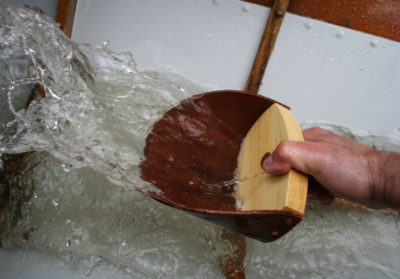
Chris, a floating tripping line may well keep clear of underwater obstructions but can cause havoc to other boats especially using outboards at night close to your anchored position. I agree that the tripping line gives the best results. Colin Walker
That’s a valid concern. I suppose I should add to my criteria for a safe and quiet anchorage is the absence of larger boats using outboard-powered tenders. My favorite anchorages in the San Juan Islands are the ones that I almost always have to myself. When I’ve had to anchor in coves used by other larger boats, I settle in for the night in water too shallow for them and out of any path tenders might use from the anchorage to a beach or dock.
The amount of line floating on the water can be limited. My retrieval line is 50′ long and I wouldn’t need all of it in a cove 15′ deep with an overnight tide change of 10′. Checking the tide tables and the depth of the anchorage and doing a bit of math would provide an estimate of how much line is required. The rest could be coiled and tied to the float.
I like your ideas; I think they are great. I had an anchor caught on underwater power lines and had to cut the line. The anchor was retrieved by a diver and returned to me so I was lucky. I will in the future use your idea of the float and rope technique.
We have an anchor crown float with poly floating line also (for a Rocna). We’ve never had cause to resort to it to free the anchor. I marked the buoy “Anchor Down Below” to differentiate it from the lobster pot buoys so others won’t anchor atop it.
Good thoughts. I agree with your conclusion. Can’t imagine a good sleep knowing there is just a breakable zip tie between me and the rocks. Anchoring in shallower water, there’s always the tried-and-true “swim for the anchor.”
I went back, by land, to the slough where I’d lost my stainless-steel anchor, but the float I’d left on the top of the chain was gone. I thought better of swimming for it. The visibility was poor and I feared that the snags that had my anchor would snag me. If the water’s clear and it’s safe to dive, swimming would be an option.
Quite often local scuba-diving clubs retrieve anchors for free because it’s a good practice technique for them.
Interesting & fascinating. Good stuff!
I use a Rocna 6-kg anchor for my 20′ Chase/Vivier Jewell. One interesting feature of this anchor is an extra hole in the main fluke section of the anchor at the very heel. It is specifically designed for a buoyed retrieval line. This makes me wonder if a Mantus fouled and trapped would be even easier to retrieve if the buoyed line was led backward beneath the roll bar, changing the angle of pull when trying to retrieve it.
Even though I am prepared to rig a buoyed retrieval line, I usually don’t . If the bottom is charted as foul or rocky, it would seem to make sense. Do other folks always rig a retrieval line? How do others choose when to use this tactic?
At a point in my life, we were a family of commercial fishermen, and losing an anchor was an expensive issue, so what we did was to shackle the chain to the head of the anchor, and tie the tail of the anchor with fishing line, this allowed the chain to lay as it was supposed to and if the anchor got hung, then the line would trip/ break out and the anchor would release and come up upside down. Also another thing that we would do was to run the anchor line thru a small inner tube and leave it on the anchor davit, when time to pull up the anchor, kick the tube into the water and then back down, the tube follows the line down and will relieve the pressure of pulling the line. This helps greatly when manually retrieving the rode. Hope that this helps someone out there. Happy Sailing
Boating on the Great Lakes has some advantages. Lack of tides is one of them. Our cottage property is surrounded by a National Park so we have two or three dozen big boats anchored near us on a good weekend. They all seem to use a buoyed trip line on their anchors, as much to prevent crossing anchor lines as to aid in retrieving the anchors.
I have used a line and a buoy in the past, but it ended many times at the propeller when leaving the anchorage